A Landscape Manifesto.
As the invisible background and mud of modern life,1 infrastructure has often been perceived through the pervasiveness of roads and highways, the remoteness of power plants and landfills, phone lines overhead and sewers below ground. Yet, for all the monumentality of these projects and their posi-tivistic undertones, this drive-by understanding gives us only a small glimpse of what it actually takes to support urban life. We spend very little time thinking about where our water comes from, or how our power is produced, where our food is grown, how far it travels, and how it gets there, or even where our shit goes.
Infrastructure does not exist in a disciplinary vacuum nor does it remain separate from its surroundings. Infrastructure is not asocial nor is it apolitical. It divides as much as it connects. It is fragmented while remaining continuous. Nor is infrastructure neutral. It excludes as much as it integrates. It is open with outlets and exits, but simultaneously closed by caps and controls. It produces externalities, has unplanned effects, and is affected by forces beyond its boundaries. As subliminal media, infrastructure generates vectors of movements and produces axes of transmission, but can also produce zones of occupation. So large and so vast it may be that infrastructure may be imperceptible to the naked eye but its effects—from connection to segregation to apartheid—are usually prevalent and visible, intended or not. A twentieth-century outcome of large-scale technological systems, infrastructure is therefore not divorced of social systems, nor independent of natural environments. More than just steel, cement, and asphalt, infrastructure therefore forms distinctively complex, urban ecologies, a vast and immense landscape of biophysical and geospatial systems, an expansive field of resources, services, and agents that together support the landscape of contemporary economies.
From Engineering to Design
Yet, the preeminence of civil engineers in city building during the past century—engineers as master planners—has largely gone unnoticed by the cult of architects and clique of urban designers alike. Often perceived as technocrats or tinkerers instead of as designers or business leaders, the ascent of civil engineers has remained peripheral to the urban design discourse of the West, from its early origins as the military planners of the nineteenth century to the master builders of the twentieth century. As the president of the American Society of Mechanical Engineers captured this coming-of-age and unique, ideological tale of becoming, in 1911:
“Engineering is the profession of the present, and will dominate the future.”2
In fact, not only are they more important, but they also vastly outnumber the design professions by more than 5 to 1.3 How these so-called ‘backyard scientists’ have attained such prominent status in the past century with very little notice or mention is perplexing. In fact, how engineers rule the world is both awesome and astonishing.4,5
Whereas other urban disciplines either recoiled from the complexity of large-scale urbanization or devolved it into legislative jurisprudence, civil engineering has reveled in it, to what historian Edwin Layton refers to as “the engineering epoch.”6,7 American president, and the only engineer (a mining engineer) to hold office in the White House, Herbert Hoover captured the dawn of the engineering era in 1923:
“Through the nature of their training, and used to precise and efficient thought; through the nature of their calling, standing midway in the conflicts between capital and labor; and above all, being in their collective sense independent of any economic or political interest, they comprise a force in the community absolutely unique in the solution of many national problems.”8
The silent majority of engineers and construction managers today have not only embraced bigness and complexity, but have also innovated and multiplied the complexities and challenges of the geographic proportions that urbanization offers.9,10 Because the twentieth century simply could not be encapsulated by a single architecture or a single policy as was proposed during the megastructures movement of the 1960s or the environmental movement of the 1970s, civil engineering embraced this complexity by breaking it down into different ontologies and architectures: constituent parts and processes, with new measures and manuals, new tests and trials, with advanced standards and specs, inventing a multitude of sub-disciplines through hyper-specialization.11
Through audacious achievements, the unfettered ambition of civil engineers is best captured in the form of actions and verbs: the action of “building” for example, takes on the dimension of “process” instead of “object,” construction as an innovation instead of administration, without sacrificing nor fetishizing the end product.12 While urban designers were retreating from the failure of their foray into bigger ambitions in between the 1960s and 1980s, the U.S. Army Corps of Engineers (USACE), for example—the largest, most emblematic agency of civil engineering in the world—was already hard at work for more than a century, not theorizing, but rather building their ambitions: harbors and canals at home, military bases, and highways abroad, as well as power corridors and power plants, road and sewer systems across nations, while remaining on standby to provide essential support services and reconstruction efforts at times of national disasters in the US.13

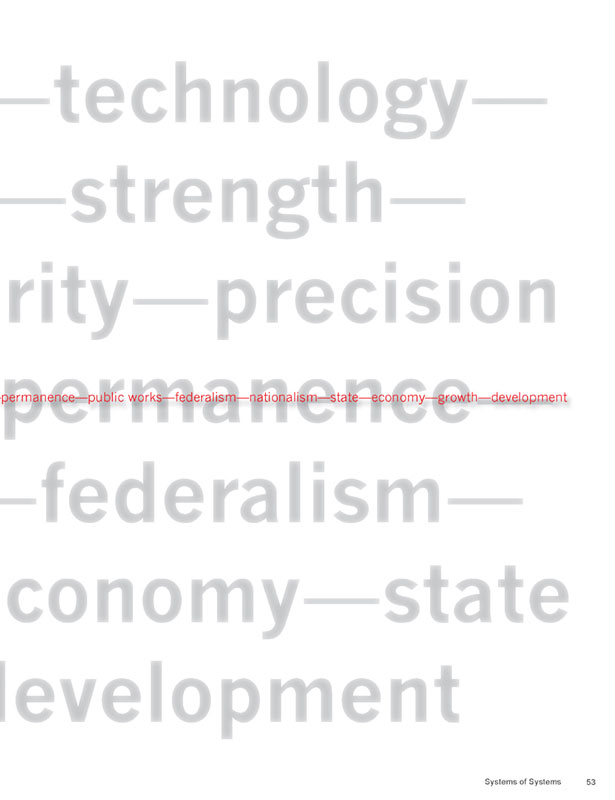
Edified by the “Annual Top Ten Public Works” by the American Society of Civil Engineers (ASCE) and scholars alike,14 a timeline of the U.S. Army Corps of Engineers reveals an overwhelming success. As outgrowth from military ori-gins,15 it has succeeded by virtue of a simple attitude: responding swiftly to spatial and environmental complexities with readily deployable techniques in the face of security threats, disasters, or catastrophes. Like the Boy Scouts or Brownies, engineers have secured a position in society that is not only based on common sense or on the foundations of technology as some believe, but that hinges on an entire chain of ideals, impulses, and inclinations. Together, they form an unbreakable bond of beliefs that transcend public consciousness across a wide societal spectrum:
infrastructure—technology—engineering—strength—
stability—security—precision—protection—permanence—public
works—federalism—identity—nationalism—state—
economy—growth—development
The patriotic positivism quietly practiced by these technological brokers sharply contrasts the aesthetic affiliations and individualistic ideologies perpetuated and preached by architects. Rather than relying on any single theory or ideology, engineers simply rely on a motto:
Essayons!
This historic refrain—simply translated as “Bring It On!” or “Let Us Try!”16—captures, much like its logo, both its capacities and ambitions: ready, able, global. But below the disguise of banality and the undertone of dumbness of infrastructure, the audacity of engineers reveals deep, spatial tendencies. With most of it buried underground or submerged underwater, their work lends an appearance of performance through virtual and assumed utility, in comparison to the more formal, megalomaniac attitude of architects and urban designers.17 As the invisible frames of anonymous architectures, the products of these so-called functionalists are analogous to facade-less buildings. Voids, without shells. Housings, without envelopes. Interiors, freed from their exteriors. Here, the context can be constructed, content can be anything, as engineers subliminally imply: Fuck form. Everything is fluid.18 For the engineers, it is as if the modern, hegemonic idea of space practically means nothing, but rather that speed and pace—through movements, velocities, rates, and fluidities—mean everything. In the banality of this fluid landscape lies their anonymity and their dominance.19 Put simply, form does not just follow function; form follows flow.20
Under the trademark banner of the USACE, Building Strong™, and the authoritative stature of the ASCE, civil engineers have garnered a level of notoriety where infrastructure investment has become the unquestioned path to economic recovery and growth.21 Together, through federal leadership, government investment, and best practices, civil engineers have mounted an unshakable case for new infrastructure across the United States, of an order of magnitude of 2.2 trillion dollars over the next five years.22 Who really can contest the simple corollary: infrastructure = economy?
This paradox of pervasive influence and invisible power is perplexing: the discipline of engineering has yet to ever produce a single manifesto.23
So, do engineers operate in a world without theory?24 Their work, their language, and their education are all determined by standards, specifications, and systems, as well as by methods, models, and measures. They relish in the isolation of variables and exclusion of social dynamics to reduce complexities down to verifiable quantities, certainties, and solutions. Their work sits on a razor’s edge of precision and a thin hairline of probability in order to produce exactitudes from indeterminacies. As an outgrowth from this culture of optimization, it is assumed that, at its best, infrastructure is a public benefit and, at the very least, an economic necessity. After all, who could argue with the delivery of your tap water, the supply of your electricity, or the removal of your garbage from the curb?
Counterintuitively, is it possible that one of the greatest strengths of civil engineering is that it has remained relatively mute in the face of urban sprawl? Their relative silence stands in stark contrast to the incessant of academic architects and unending indictment by the coalition of armchair lawyers and economists that have hijacked the planning profession.25 Instead, engineers simply march on, applying Fordist economies of scale from the industrial era, across cities, continents, even oceans. Although these tendencies and inclinations may seem less aesthetic, their motivations are definitely geographic. Sponsoring the onward march of urban decentralization, they have uncritically orchestrated large-scale and expansive infrastructures, aided and abetted by a 1960s culture of automobility and expeditionary logistics. Using highways and roads as horizontal elevators, they are the stationary attendants that have fueled and propelled patterns of spatial diffusion and decentralization: a process that continues to be the greatest, most important force in the world.26

FIG. 1 – Centralized, Decentrolized and Distributed Networks
Form and Function to Flows and Fluidities
Historic comparison of models of spatial and ecological organization illustrate the difference between networks (closed systems) and ecologies (open systems). On the left, the diagrams draw from mid-century theories of spatial organization showing a range of typological network variations rooted and representative of central place theory developed by German geographer Walter Christaller (Central Place Theory, 1933–1972) characterized here through the network diagrams of systems engineer Paul Baran (On Distributed Communication Networks, RAND, 1962). On the right, from the late century, ecological models of spatial organization through open systems theories, developed by the ecologist Howard T. Odum (Ecological and General Systems, 1966–1983). The main difference between these models of spatial organization, between networks and systems, demonstrates how the modern concept of networks addresses form and physical space (operationalized through a closed system of points and lines), compared to how the postmodern concept of systems addresses fluidity and flows (animated through vectors, flows, fields, inputs, outputs, energies, exchanges, patterns, and processes). If network thinking characterizes the mid-century approach to urban design, then open systems thinking, that is the ecologic optic, is applicable to complex, indeterminate conditions, risks, and hazards that are typical of contemporary urban patterns.

Figure 25-21. Representative city system.
Decentralization and Dispersal
But if the singular continuity of centralized infrastructure has provided the path for Western urbanization, then the gloss of contemporary urban life—safe, stable, accessible—is maintained by the illusion of permanence that infrastructure outwardly projects. Beyond the seamless buff of technological and mechanical systems, very rarely do we see the physical extents of this vast, often underground infrastructural territory, let alone understand the longevity of this large, technological apparatus. After all, infrastructure only becomes visible at the precise moment that it fails. In the past decade, aerial images of blackouts, amateur videos of bridge collapses, and front-page news of plummeting pieces of concrete are previews of the imminent fragility that infrastructure falls under. But so far, this vast technological apparatus has been portrayed as an essential, permanent, and necessary fixture of contemporary society. The water always runs; the lights always come on; and the heat always fires up when temperatures drop.
Is it then possible to assert that infrastructure works almost too well? Is it possible then that civil engineering is without reproach?
If Roosevelt’s dams and Eisenhower’s highways represent the zenith of civil engineering through the might of American presidents and federal public works, then their wear-and-tear, their breakdown, should reflect the imper-manence of that might and warning of that power. As indicators of the limits of single-purpose infrastructure, bridge breakdowns and dam cracks are now informing a new generation of practitioners—urbanists—who are putting into question industrial economies of scale upon which the growth of twentieth century contemporary society has been built on, asking important questions about the future.27 What infrastructure should be rebuilt? How should it be rebuilt? Should it be rebuilt at all?28
With greater frequency of incidents and accidents in the past two decades, the buildup and breakdown of infrastructure as well as their unintended environmental consequences have decisively put into question the necessity for total infrastructural reconstruction, including the imperative for infrastructure itself. Over time, the radiant permanence lent by the continuous, uninterrupted appearance of infrastructure’s magnitude begins to crumble under exposure to its imperfection, fragility, and incompleteness.
Today, the externalities of the industrial economies of scale that underlie civil engineering practice are stress tests of centralized infrastructures showing signs of irreparable wear, hazardous risks, fiscal failures, and environmental spillovers. As postwar infrastructures in North America near the end of their serviceable lifespan, we can now understand single-purpose infrastructure of the twentieth century (curbs, pipes, roads, and tunnels) and its offspring, single-purpose land use zoning (residential, commercial, institutional, and industrial),29 which sought to subdivide and segregate, can no longer keep separate systems and technologies from the resources and regions they require and convey. As a result, the cultures of containment and control born from early theories of city form must be put into question. In policy making decisions, spatial planning models that directly and indirectly promoted centralized infrastructure—concentric (Burgess, 1920s), sector (Hoyt, 1930s), polynucleated (Harris & Ullman, 1940s)—need to yield, and to a certain extent, weaken to more distributed patterns of organization. It can be achieved strategically through the processes of regionalization or territorialization, from which infrastructure can be redefined and redesigned.
Clearly, infrastructure design is more than just the sum of civil engineering and transportation planning alone. Whether it involves freshwater lakes or coastal estuaries, resource deposits or continental shelves, agricultural soils or forest fuels, underground aquifers or aboveground airspace, micro-climate or macrobiotics, the coupling of technological and biophysical processes can serve as synthetic ecologies underlying urban populations.
By redefining infrastructure, the re-questioning of the oversupply and overproduction of infrastructure illustrates the exclusive purview of civil engineering in its delivery. Made possible by scientific planning and industrial economies of scale, the oversupply and apparent seamlessness of infrastructure parallels other recent overabundances: the oversupply of single-family housing, single-purpose transport, and single-energy supply, all of which are being re-questioned today. And, at their foundation is an oversupply of credit, one that was promoted by the banking and lending industries, the principal cause and effect of the current economic crisis and countless environmental externalities.30
These overexertions mark the coincidence of the breakdown of single-purpose infrastructure and other centralized structures: nationalities, governments, agencies, religions, borders, technologies, and regulations. This process of spatial decentralization also parallels social decentralization through the dissolution and breakdown of social hierarchy, in favor of a sociogeographic sprawl and new cultural concentrations that are mixing and spreading across the planet.31 And while many may see the force of decentralization as destructive or wasteful,32 the persistence of decentralization demonstrates its resilience and intelligence. The diffusion of spatial structures is yielding contemporary geospatial patterns which are counteracting the imperial hegemonies and weakening industrial orders of the past: from the drawdown of welfare states and the destabilization of dictatorships, to the migration of populations and climate zones, to the distribution of nitrogen and carbon, or the daylighting of underground streams and recycling of waste effluents.
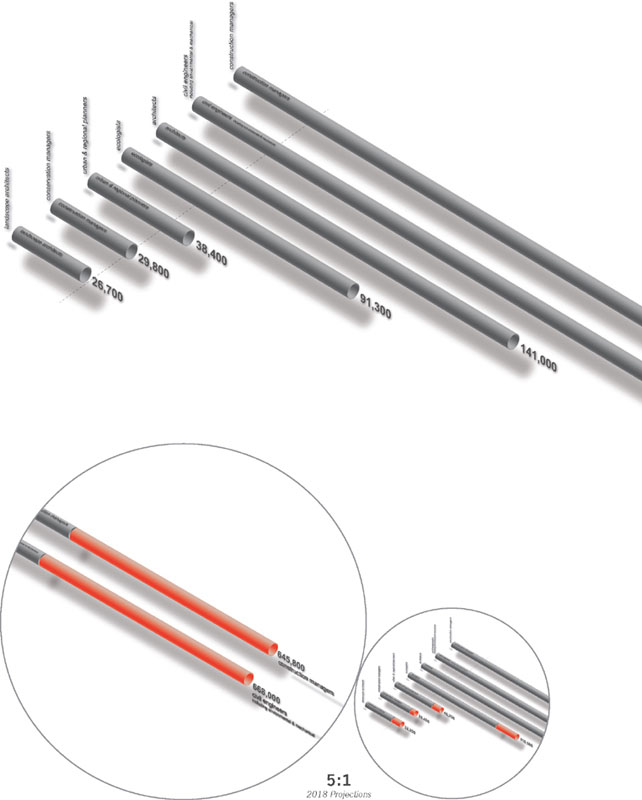

The Silent Majority
Civil Engineers as the Master Planners of the Twentieth Century Comparative chart of professional memberships (present and projected) from the major design disciplines, with data from The U.S. Bureau of Labor Statistics, 2008–2018, and professional licensing organizations. Diagram: OPSYS
Reformulated through readings of urban diffusion,33 the so-called “mindless juggernaut of subtopia” population patterns and spatial leapfrogging is yielding unprecedented formats of urbanization of new “regional significance,” as landscape architect and planner Christopher Tunnard foresaw in the middle of the twentieth century.34 Decentralization is opening territories of knowledge whose most critical effect is the changing concept of urban space from settlement to exchange, away from the unilateral pole of the industrial settlement (the city as industrial metropolis), and instead toward a landscape of exchange.35
Convergences and Crossovers
If the overexertion of engineering and inertia of urban planning are the fallout of the last quarter of the twentieth century, then it is no coincidence that the revival of geography and emergence of ecology are the blooms of the twenty-first century. Today the linear, fixed, and closed structures of the industrial economies of supply are violently being supplanted by more complex, flexible, and circular systems of urban economies of demand. It is around these emerging urban economies that new urban ecologies are growing.
In one of the most critical texts in the history of engineering, “Cultural Origins and Environmental Implications of Large Technological Systems,” Rosalind Williams observes:
“the outstanding feature of modern cultural landscapes is the dominance of pathways over settlements […] the pathways of modern life are also corridors of power, with power being understood in both its technological and political senses. By channeling the circulation of people, goods, and messages, they have transformed spatial relations by establishing lines of force that are privileged over the places and people left outside those lines.”36
From the wake of the exhaustion of the environmental lobby37 and the proliferation of these new market economies, pours out an array of unprecedented knowledge. The result of this ripple effect across this new landscape is recombined areas of knowledge in the fields of ecology, energy, and economics,38 as well as design, planning, and engineering. As the operative notion of ecology39 is radically expanding, the early work of systems ecology in the 1970s is finding new relevance. Innovating a pluralistic interpretation of ecology through complex configurations of open systems and circular flows, the work of systems ecologists such as Howard T. Odum, for example, have come to expose the skewed, scientific positivism of linear, closed systems that, thanks to industrial systems engineers, perpetuated one of the most dangerous misconceptions of the twentieth century: urbanization as problem.40 Through flawed notions of carrying capacity, growth limits, and resource scarcities, visions of world apocalypse and environmental destruction perpetuated by systems engineers have now dissipated through the representations of urbanization as fluid, circular, and strategic, thanks to the work of open systems ecologists. The fantastic, planetary visions of technological fixes41 pushed by systems engineers to “solve” the urban problématique is now beginning to fade under the more calibrated knowledge of systems ecologists, while also avoiding classic Newtonian positivism.
Furthermore, when viewed as both an urbanist and a geographer, Odum reveals the flawed, centripetal view of urbanization that has predominated Western social thought in the last two centuries.42 Rather than exclude the black sites and brown fields of urban economies, Odum’s ecological lens integrates them. Through this open systems optic, Odum proposes a requalification of urbanization through patterns, processes, exchanges, and interactions. Waste ecologies are its best example through an infinite multitude of backflows, overflows, reflows, residues, leakages, residues, impurities, spillovers, discards, disassemblies, and sheds. Whereas urban form may have historically been expressed through the design of streets, blocks, and buildings thanks to the nineteenth century architects of the Beaux Arts or the twentieth century transportation planners, Odum’s synthetic view of ecologies opens the potential for the design of urban flows, where fluidity in and of itself, the structure of urban economies, generates a multitude of forms. As a consequence, the pluralization of ecological knowledge contributes toward a renewal of interest in the basic, indivisible flows of urbanization: waste, water, energy, food, and transport. Ultimately, this reformulated understanding of urbanization breaks open the centrality and singularity of infrastructure, toward new social forces, geospatial formations, and soft technologies which operate as infrastructural ecologies, the lifeblood of circular, urban economies.
In this expanded, geographic understanding, urbanization then becomes a field of shared, polyvalent practices as opposed to a specialized or exclusive discipline such as architecture or urban design. In this expanded field, the designation, delineation, and direction of these ecological processes takes new priority, relevance, and precedence as practice. Counteracting the paradigms of control and containment of engineering-based planning practices, the active deployment of living, dynamic processes becomes synonymous with the design of relationships, associations, synergies, reciprocities, and contingencies expressed in the configuration of the ground, the programming of horizontal surface materials, the construction of vertical equipment, the cultivation of outgrowths, and territorial inscriptions.
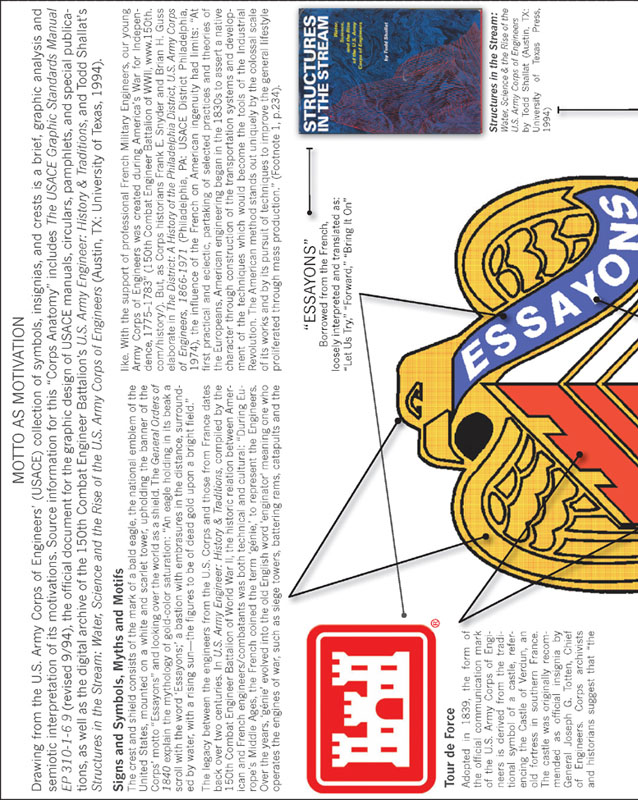
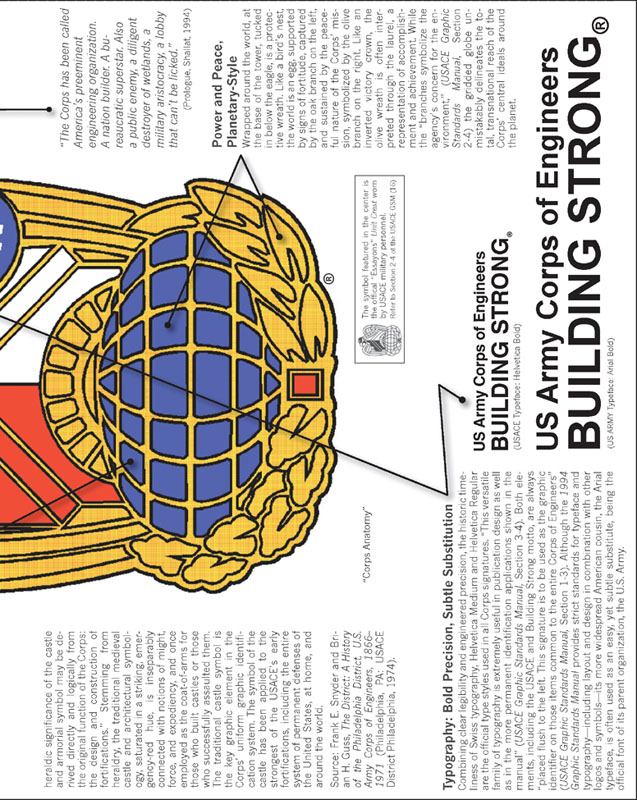
As the vertical, hierarchical differences between engineering (as technological discipline) and ecology (as a scientific subject) break down, a new design agency spills out. Combined, the effects of the fin-de-siècle recuperation of the geographic subject from the den of military hibernation and the emergence of ecology out of the exhaustion of the environmental lobby, are exponential and earth-moving. In this strategic “accouplement” of disciplines, Rosalind Williams’ tectonic observations are instructive:
“the concept of connective systems is primarily phenomenological rather than sociological. These constructions are tangible structures existing in geographical space, and their components are related primarily in physical rather than in social terms. When engineering involves the creation of such structures, it looks more like a ‘mirror twin’ of landscape architecture or of urban planning than of science.”43
Ecologies of Scale
It is from these proliferating conjunctions and crossovers, across a spectrum of urban disciplines—between ecology and engineering, geography and planning, policy and power44—that this position has emerged. Located in the zones between intellectual jurisdictions, this book brings together a series of texts that present the landscape of urbanization, including its geographies and ecologies, as a conflation of complex processes, natural and constructed, across several scales simultaneously.45 Through the synthesis of ecology and infrastructure together, this position proposes strategies that engage urban culture beyond the dogma of industrial production, as an inversion of the industrial economies of scale which have regulated the shape of urbanization during the past century.
Both telescopic46 and stratified,47 this strategic position proposes disciplinary contraventions by sliding across scales and trespassing professional territories across planning and policy, engineering and ecology, architecture and urban design. In “Infrastructure and Modernity: Force, Time and Social Organization in the History of Sociotechnical Systems” (2003), the catalytic work of historian and communications theorist Paul N. Edwards expresses this methodology as an intellectual imperative:
“Multiscalar analysis requires an enormous depth of knowledge—more than can be expected of most individuals. Social and historical scholarship has few precedents for genuine team-based approaches which requires a complex process of coordination, agreement on methods and division of intellectual labor. It may be too much to hope that our disciplines will evolve in this direction, particularly given the present reward structures of most academic institutions. But if I am right that multiscalar analysis holds the key to an understanding of technology and modernity, we must at least make the attempt.”48
The disciplinary slippages and sliding scales underlying this position represent that attempt. By profiling methods, models, and measures, different levels of intervention are engaged and proposed. Casting a wide net across different flows, forces, and formations of urbanization, the position cross-references semiotic interpretations (hermeneutic, syntactic, signified) with strategic propositions (relational, spatial, territorial). This position thus proposes a basic redefinition and representation of infrastructure as the gel of urbanization, with the potential for rebuilding and rewiring its most basic, irreducible systems: from waste and water, food and fuel, flora and biota, mobility and power.
The focus of this position is twofold. From one level, the writings are intended to recast the role of twentieth-century urban designers vis-à-vis the emerging ecological knowledge of our time, where urban economies consist in more than just the sum of streets, blocks, and buildings. From another level, the focus targets scientists and technocrats whose daily work is dictated exclusively by quantitative information and often divorced from social, ecological, and biophysical complexities. With an aim toward bringing several seemingly disparate disciplines together—engineering and ecology, landscape and infrastructure, zoning and geography, planning and cultural history—specialists of these individual areas of knowledge, disciplines, and practices will no doubt find holes and cleavages in the historic information provided. The undisguised adolescence of this position purposely acknowledges the imperfections, impurities, and imbalances of urbanization to bridge several gaps and less-chartered areas. Through precise approximations and operative generalizations, the strategic incompleteness of this position is intended as an invitation for so-called non-urbanists—the social groups, the logistics companies, the conservation organizations, the labor forces—to engage and participate in the discourse of urbanization by design, or by demand.
From these dual ends, the position is also both an appraisal of current conditions and a proposal for the future. As an anticipatory and projective endeavor, this compilation of writings goes beyond observations and interpretations in order to propose and advance a series of strategies and synergies. Purposely kept dumb, the operative observations are extracted from readymade formats of construction and processes of urbanization that are easily interchangeable, modifiable, and scalable. They propose standards that can be re-standardized or de-standardized.


Together, they foreground a field of intervention where landscape figures as both strata and spectrum of urbanization—from super-urbanization to dis-urbanization—rather than from a pure ideology of production, form, or concept. The content extends across a range of sites, networks, and geographies shaped by patterns and processes in continuous formations and deformations, in various modes of assemblies and disassemblies. Starting from the essential utilities that make up urban economies, the main thesis of the book transposes major dimensions of urban infrastructure in all their different permutations and interfaces—the surfaces, subsurfaces, operations, processes, atmospheres, and altitudes—of the urban world that we live and breathe in.
The transposition of landscape and infrastructure therefore outlines how the field of landscape—once architecture’s surrogate—can break free and exploit its affiliation to ecology, engineering, and geography by reengaging large-scale planning and reimagining small-scale surfaces and materials through a reform of existing urban infrastructures and a projection of new ones. But, to go beyond engineering and propose new strategies of landscape infrastructure intervention, requires not only a leap beyond disciplinary cadres, but also in response to the more intangible, the more complex, the more contingent, the more indeterminate, and sometimes unknown challenges that lie ahead. Whether it calls for the design of that future or its un-design, the cultural theorist Sanford Kwinter anticipates:
“Despite the customary, fashionable genuflection toward infrastructural questions and concerns today, little attention is being paid to the more radical, more disturbing reality: that infrastructural demands are not only becoming exponentially more importunate today but that these infrastructural demands are breeding and mutating in kind and not only in degree. We have no choice today but to deal with the new ’soft’ infrastructures: knowledge infrastructure, program infrastructure, cultural infrastructure, virtual infrastructure. The demand for design—and de-design—in our over-engineered, over-mediated world is both enormous and pervasive, yet the majority of architects still respond to it with the medieval language of the stoic, autonomous building. Today’s design world is stratified, with an emerging class structure, its associated embedded conflicts, and an emerging new proletariat increasingly separated from the principle means of production.”49
This double entendre of landscape infrastructure entails both the design and un-design of urbanization through new faculties and facilities, through new forces and flows, through new formations and deformations, through different formats of exchange and diversified markets, new interplays and interactions, alternative codes and protocols. Rather than propose a universal theory or new ideology here, these reciprocal possibilities provide simple and sometimes subversive practices that support new attitudes and appetites for crossovers, by design, by improvisation, by coincidence, and by accident.
This twin interpretation also posits a new and expanded understanding of what infrastructure is, and what it is becoming. It positions the field of landscape as infrastructure, an instrumental strategy across a range of jurisdictions, interests, and stakeholders, inviting new investors, users, and agents. No longer can it remain the exclusive purview of the engineer or the technocrat. No longer are we just talking about roads, sewers, or power plants anymore. We are referring to the systemic field of biophysical resources, so-ciotechnological services, and exchange spaces, held together by a mesh of hardware and software that calibrates and conditions urban economies. As we move further and further away from the monofunctionality of infrastructure, the cultures of design, engineering, and policy move closer and bring new positions, alignments, and orientations across a vast landscape of proto-infrastructures and proto-ecologies.
From the silent majority of engineers to the exuberant minority of architects, this unauthorized, unsolicited biography may well find itself in the outnumbered hands of designers and planners who can hopefully and equally gain from a closer appreciation of the perceived banality of infrastructure, shedding light on the synthetic, social, and subversive ecologies that precondition it. As offspring of the recovery of geography and the blossoming of ecology, the disposition and potential of this book therefore serves as an anonymous manifesto for next-generation engineers, a preliminary primer for planners, and a conceptual guide for the emerging urbanist.
Notes
1. Preeminent systems theorist Paul Edwards suggests the notion of infrastructure as media and interface: “Mature technological systems—cars, roads, municipal water supplies, sewers, telephones, railroads, weather forecasting, buildings, even computers in the majority of their uses—reside in a naturalized background, as ordinary and unremarkable to us as trees, daylight, and dirt. Our civilizations fundamentally depend on them, yet we notice them mainly when they fail, which they rarely do. They are the connective tissues and the circulatory systems of modernity. In short, these systems have become infrastructures.” See “Infrastructure and Modernity: Force, Time & Social Organization in the History of Sociotechnical Systems,” in Modernity and Technology, edited by Thomas J. Misa, Philip Brey, and Andrew Feenberg (Cambridge, MA: MIT Press, 2003): 185.
2. E.D. Meier, “The Engineer and the Future (1911 Presidential Address),” ASME Transactions XXXIII (New York, NY: ASME, 1912): 495.
3. Civil and environmental engineers currently outnumber the small contingent of designers (architects, landscape architects, and urban planners) by a factor of more than 5 to 1. According to the 2011 The Bureau of Labor Statistics in the US and professional associations across North America, there are more than 500,000 civil engineers (including professional associations of civil engineers, together with mechanical and environmental engineers), in addition to the more than 500,000 construction managers (the so-called “failed architects”) who build the urban world.
4. This expression is borrowed from a common adage which has historically been repeated over and over by engineers at the University of Toronto. Like many other universities in North America, the common refrain “Engineers Rule The World” is rehearsed over and over again during freshman initiation week, ritualized by aspiring engineers clothed in blue coveralls, with their faces and hands dipped in purple dye. In keeping with this tradition, the associated acronym E.R.T.W. is pervasively scribbled on wall surfaces and bathroom stalls. However juvenile or medieval this practice may seem, the dogmatic initiation and graffiti reveal a disciplinary arrogance and superiority instilled from a very early stage of professional education that takes the form of a modern-day rite of passage. The University of Toronto Department of Engineering and Applied Sciences is ranked thirteenth worldwide and is the largest school in Canada, with an enrollment of about 6,500 students. Comparatively, in 2011, the University of Toronto Daniels School of Architecture, Landscape, and Design counts approximately 500–750 students.
5. This observation also echoes the few self-critical texts in the discipline of civil engineering. See the observations of Neil S. Grigg in his declaration on the profession of engineering, Civil Engineering Practice in the 21st Century (Washington, DC: ASCE Press, 2001), and A. Emin Aktan in “The Civil Engineer in the New Millenium,” paper invited for the Ersoy Symposium (Ankara,TR: Middle East Technical University, May 16, 1999).
6. In an 1895 presidential address to the American Society of Civil Engineers, bridge-builder George S. Morison boldly pronounced: “We are the priests of material development, of the work which enables other men to enjoy the fruits of the great sources of power in Nature, and of the power of mind over matter. We are priests of the new epoch, without superstitions.” As quoted in Edwin Layton Jr.’s The Revolt of Engineers: Social Responsibility and the American Engineering Profession (Cleveland, IL: Press of Case Western Reserve University, 1971): 58–59, and in Carl Mitcham, “Responsibility and Technology: The Expanding Relationship” in Technology and Responsibility, ed. Paul T. Durbin (Dordrecht, NL: Springer Science & Business Me-dia, 1987): 16. See also George S. Morison, “The New Epoch and the Currency,” The North American Review Vol.164, No.483 (February 1897): 139–150. For a more recent discussion of the era of engineering and large scale infrastructure, see “Bigness, or the Problem of Large” in S, M, L, XL by Rem Koolhaas and Bruce Mau (New York, NY: Monacelli Press, 1998). Koolhaas’s text appears in the early 1990s at the precise moment that architecture and urban design retreated from extra-large scales. From a distance, the “Bigness” text appears less as a manifesto on scale, but rather a plea for recapitulating architecture’s long-standing lineage with its parent discipline capital ‘E’ Engineering. Important to reconsider is the historic interrelationship between design and engineering that existed as far back as the work of Leonardo da Vinci, for example, (as architect-engineer), prior to the specialization of disciplines, and how the discipline of architecture has retreated from large-scale, geographic urbanization. Now isolated as an elitist practice of singular buildings and prestige projects, its urban proxy—that of urban planning—has been taken hostage by lawyers and economists who devolved spatial planning practices into dispensing of policy and procedure at the expense of spatial, physical design of large territories, and of urban ecologies. Comparing the experience of difference between European and American practices, Mauro F. Guillén’s elucidates the importance of complementary and sometimes conflicting relationships between architecture and engineering at the turn of the twentieth century during the rise of “Scientific Management” and “Taylorism” (for which modernism is a trope) in his unique and exhaustive “Scientific Management’s Lost Aesthetic: Architecture, Organization, and the Taylorized Beauty of the Mechanical,” Administrative Science Quarterly 42 No.4 (December 1997): 682–715. The association between the sciences of management and modes of engineering practice in the mid-twentieth century are closely associated with and similar to the rise of Taylorism at the beginning of the twentieth century, from which systems thinking and operations research emerged. See Agatha C. Hughes and Thomas P. Hughes, Systems, Experts, and Computers: The Systems Approach in Management and Engineering, World War II and After (Cambridge, MA: MIT Press, 2000).
7. The significance of the split between engineering and architecture was discussed by urban historian Sigfried Giedion more than a half century ago, in his Norton Lectures delivered between 1938 and 1939 at Harvard University: “But as long as scientific and technological advances were used in architecture without being absorbed by it, the engineer remained subordinate to and detached from the architect. The architect, on the other hand, was left isolated from the most important movements going on in the world about him. Until he succeeded in coming to terms with the changed environment, until he recognized the architectonic possibilities in modern constructional methods, no new tradition relevant to the age could develop. It was out of those technical innovations which appear only behind the scenes in nineteenth-century architecture that the architecture of the future had to grow. Construction was, as it were, the subconsciousness of architecture; there lay dormant in it impulses that only much later found explicit theoretical statement. […] Hence the interest in these apparently trivial developments, these timid introductions of new materials and new methods, have for the historian. Tendencies, still living and active in our day, the constituent facts of contemporary architecture, trace back to just such unpretentious beginnings. The advent of the structural engineer with speedier, industrialized form-giving components broke up the artistic bombast and shattered the privileged position of the architect and provided the basis for present-day developments. The nineteenth century engineer unconsciously assumed the role of the guardian of the new elements he was continually delivering to the architects. He was developing forms that were both anonymous and universal,” in Space, Time & Architecture: the Growth of a New Traditio-5th edition (Cambridge, MA: Harvard University Press, 1941): 183.
8. Herbert Hoover to Richard L. Humphrey, February 1, 1923, file “Federated American Engineering Societies, 1992–1924,” box 1-I/128, Herbert Hooover Papers, Herbert Hoover Presidential Library, Iowa, in Edwin Layton Jr.’s The Revolt of Engineers: Social Responsibility and the American Engineering Profession (Baltimore, MD: The Johns Hopkins University Press, 1986): 189–190.
9. In addition to the fracking of disciplines and profes-sionalization of practice, the mid-twentieth century period simultaneously witnessed the involuntary exodus of geography from academia toward the military as the partial fallout of the split between architecture, engineering, and planning between the 1930s and ′50s. This era equally marks turbulent periods of geography and engineering legacy at Harvard University. See Neil Smith, “Academic War over the Field of Geography: The Elimination of Geography at Harvard, 1947–1951,” Annals of the Association of American Geographers 77 No.2 (June 1987): 155–172.
10. Pedagogically, the disciplinary rift between engineering and architecture dealt a dramatic blow to the future of design (keeping in mind that they were practically one of the same less than a century before, for more than two thousand years). For better or worse, the Graduate School of Design and Harvard University have arguably been in the shadows of MIT, the engineering giant, especially after the world wars and the rise of military research during the Cold War. Furthermore, the research focus of both universities reveals their intentions and agendas: MIT’s School of Civil & Environmental Engineering alone invests between 8 and 10 times more on research than Harvard University, for example. See the Center for Measuring University Performance, The Top American Research Universities: 2010 Annual Report (Phoenix, AZ: Arizona State University, 2010).
11. See the work of well-known civil engineer, Henry Petroski, Success through Failure: the Paradox of Design (Princeton, NJ: Princeton University Press, 2008). In deference to other forms of design where individuals are single-project authors, the engineering of infrastructure has evolved into subdisciplines of engineering that relate the complexity of a bridge or power plant to that of an airplane, where no single discipline can claim total design, but rather because of its size, entails a level of complexity necessitating a level of cross-collaboration and interdisciplinarity which naturally grows in unprecedented ways.
12. See Anna Lisa Meyboom, “Infrastructure as Practice,” Journal for Architectural Education 62 No.4 (May 2009): 72–81.
13. See USACE Office of History, The History of the U.S. Army Corps of Engineers (Honolulu, HI: University Press of the Pacific, 2003).
14. For example, see the work of Daniel L. Schodek from Harvard University’s Graduate School of Design, Landmarks in Civil Engineering (Cambridge, MA: MIT Press, 1987). In a chapter dedicated to urban planning, Schodeck asserts the pervasiveness of civil engineering’s influence: “the forms our cities have taken also owe much to the work of engineers who developed systems for water supply and control, urban transportation, and power. The planning of these systems not only responded to the city fabrics already present but influenced future developments as well, in either anticipated or unanticipated ways. Examples of public works that have stimulated urban growth may be found wherever one looks” (289–290). See also Willy Ley, Engineers’ Dreams (New York, NY: Viking Press, 1954).
15. Civil engineering is an outgrowth of military engineering during a prolonged period of peace at the end of the nineteenth century, and during a period of significant urban change at the dawn of the twentieth century. Its origins are also rooted in the lesser-known, yet equally important legacy of topographic engineers. See Henry P. Beers, “A History of US Topographical Engineers, 1818–1863,” The Military Engineer 34 (June 1942): 287–291 and (July 1942): 348–352.
16. For the unofficial translation, see “The 150th Combat Engineer Battalion, History & Traditions,” www.150th.com/history/essayons.htm. In a symposium titled “Landscape Infrastructure: Systems & Strategies for Contemporary Urbanization” in 2012 at Harvard University, engineering historian Todd Shallat from Boise State University claimed in a more casual but more convincing way that the slogan “Essayons” could boldly be translated to the more assertive, can-do attitude of the Corps’ “Bring it On.” And, for the Corps, “it,” according to Shallat, means “anything.”
17. The disciplines of architecture and urban design have further marginalized themselves by theorizing the world through the singularity of bigger and bigger buildings; a phenomenon eulogized in Reyner Ban-ham’s Megastructures: Urban Futures of the Recent Past (New York, NY: Harper & Row, 1976), the exiled British urban planner to the US. Concurrently, the discipline of urban planning balked at the seemingly uncontrollable spread of suburbanization by promoting greater compactness and smaller footprints through regulatory controls. By postponing the emphasis of form as driver of urban economies, landscape urbanist Charles Waldheim proposes that “a focus on infrastructure” may provide “a riposte to civil engineering’s impervious attitude toward the subject” while avoiding “the clichéd naiveté of much that stands for an infrastructural approach to urbanism today.” See Charles Waldheim’s “Urbanism after Form,” in Pamphlet Architecture 30-Coupling: Strategies for Infrastructural Opportunism by Infranet Lab/Lateral Office (New York, NY: Princeton Architectural Press, 2011): 4. Acclaimed urbanist AbdouMaliq Simone takes this view radically further in “Urbanism beyond Architecture: African Cities as Infrastructure–Conversation with Filip de Boeck and Vyjayanthi Rao,” in African Cities Reader, ed. Ntone Edjabe and Edgar Pieterse (Vlaeberg, South Africa: African Centre for Cities & Chimurenga, 2010): 23–40.
18. This statement inflects two earlier declarations. The first statement is by Rem Koolhaas: “Bigness is no longer apart of any urban tissue. It exists; at most, it coexists. Its subtext is fuck context.” See “Bigness or the Problem of Large,” in S, M, L, XL (New York, NY: Monacelli Press, 1995): 502. The second statement is by Michael Rock, founder of 2×4, in “Fuck Content,” questioning the self-doubt and self-inflicted anxiety of designers: “The problem is one of content. The misconception is that without deep content, design is reduced to pure style, a bag of dubious tricks. In graphic-design circles, form-follows-function is reconfigured as form-follows-content. If content is the source of form, always preceding it and imbuing it with meaning, form without content (as if that were even possible) is some kind of empty shell.” Published in Multiple Signatures: On Designers, Authors, Readers and Users (New York, NY: Rizzoli, 2013): 45–56, and in an earlier version, “The Designer as Author: What does it really mean to call for a graphic designer to be an author?” in Eye Magazine 20 No.5 (1996).
19. Civil engineers are typically less interested in the boutique cities that designers speak of and sponsor through their work, often ignoring or yawning at the visions of yuppie urbanism promoted by contemporary architects and urban designers, often displayed in exceptional, three-dimensional renderings and photo-shopped utopias of metropolitan life.
20. This proposition challenges the turn of the century struggle with ornament that led to the cultural cliché and industrial adage, form follows function, popularized by modern architects (such as Louis Sullivan and Frank Lloyd Wright, for example), and other industrial designers in the automotive industry during the early twentieth century. See Louis H. Sullivan, “The Tall Office Building Artistically Considered,” Lippincott’s Magazine (March 1896): 408–409, and Aldolf Loos, “Ornament and Crime,” first published in French as “Ornement et Crime” (trans. Marcel Ray), Les Cahiers d’Aujourd’hui 5 (June 1913): 247–56.
21. See the “5 Key Solutions” proposed by the American Society of Civil Engineers that respectively rely on federal leadership, sustainability and resilience, planning, maintenance, and investment, in The 2009 Report Card for America’s Infrastructure, www.infrastructurere-portcard.org/solutions.
22. Ibid.
23. The manifest relationship between urbanization and engineering has a small but growing membership which has produced a few important texts in the past decade. In an edition of the journal The Bridge in 1999, preeminent systems engineer and innovator of industrial ecology Robert A. Frosch establishes the premise and promise of urban conditions facing civil engineering. Yet its technological positivism is reflective of the distance that the discipline maintains from the spatial, ecological, and social complexities in urban environments. In Frosch’s words, vis-à-vis these complexities: “But be of good cheer: There is engineering work to do!” See “Facing Urbanization: The Engineering Challenges,” The Bridge 29 No.4 (Winter 1999): 3.
24. Edwin Layton Jr.’s early manifesto in 1971, The Revolt of Engineers: Social Responsibility and the American Engineering Profession (Cleveland, IL: Press of the Case Western Reserve University, 1986), is a rappel à l’ordre for the discipline of engineering as it faces contemporary challenges to the social vacuum and technological frame in which it operates. Beyond disciplinary confines, three of the most important thinkers in the past century to address the collective anonymity of engineers and a lack of critical discourse, include Sigfried Giedion (1888–1968), Rosalind Williams (1944–), and Antoine Picon (1957–). Working in separate historic periods and contexts, they have all established critical correlations and differentiations between histories, thought processes, technological influences, technical inferences, and disciplinary cadres of engineering. See Sigfried Giedion, Time, Space and Architecture: the Growth of a New Tradition (Harvard University Press, 1941), Rosalind Williams, Retooling: A Historian Confronts Technological Change (Cambridge, MA: MIT Press, 2002), and Antoine Picon, “Engineers and Engineering History: Problems & Perspectives,” History and Technology 20 No.4 (December 2004): 436. To different extents, their work aptly captures the paradoxical nature of engineering, how the practice shapes spatial patterns and transforms natural processes, obliquely proposing historiographic reviews of engineering practice as the discipline enjoys greater and greater influence on urbanism for the foreseeable future.
25. Rosalind Williams proposes that the social vacuum and technological frame in which engineers operate has lead to “the expansive disintegration of engineering,” outlined in the second chapter of her Retooling: A Historian Confronts Technological Change (Cambridge, MA: MIT Press, 2002): 29–89.
26. There is an important legacy in the field that demonstrates the intellectual grappling with the phenomenon of decentralization. While the architectural historian Sigfried Giedion wrote the book Space, Time & Architecture during his Norton Lectures at Harvard University in 1938–1939, landscape architect Christopher Tunnard from western Canada, who was also at the Graduate School of Design by invitation from Walter Gropius between 1938–1943, completed his book Man-Made America: Chaos or Control while at Yale University’s School of Planning afterwards. Albeit published more than a decade apart, the comparison of the two books by Giedion and Tunnard is compelling as their research was incubated almost simultaneously. Both bear striking resemblance in terms of their affinities for geographic scale and complexities engendered by the magnitude of urban change during the mid-twentieth century. This intellectual coincidence is not accidental nor is it insignificant. It was a response to the coupling of historic lineages between design and engineering, history and urbanism, and landscape and infrastructure, from a very early beginning at the Graduate School of Design, where all fields of design could be active and involved, seemingly crossing over each other. Arguably, that coupling was severed between the 1930s and 1960s with the disappearance of geography from Harvard and other American universities, as well as the creation of the first urban design program in the world in 1960 by Catalan architect and city planner Josep Lluís Sert, then dean of the Graduate School of Design.
27. In Roads to Power: Britain Invents the Infrastructure State (Cambridge, MA: Harvard University Press, 2011), landscape historian Jo Guldi elevates the discourse on the invention of infrastructure by excavating the geopolitical context and sociospatial effects of building infrastructure as a nation-building project. Her views emerge at a time when the discourse on infrastructure has shifted across technical, ideological, and economic polarities. But Guldi reminds us of the great forces of centralization and decentralization at work across formal and informal entities such as people, cities, nations, and continents. For Guldi, infrastructure is not merely an artifact of the past, but it is also a progenitor, a builder of the future.
28. In “Infrastructural Ecologies: Principles for Post-Industrial Public Works,” Places (October 2010), Hilary Brown outlines the potential for multipurpose infrastructure by proposing how the design of urban ecologies is central to the new project of urban renewal to overcome “governmental shortcomings and obsolete bureaucracies,” http://places.designobserver.com/feature/infrastructural-ecologies-principles-for-post-industrial-public-works/15568/
29. See Michael Allan Wolf, The Zoning of America: Euclid v. Ambler (Lawrence, KS: University Press of Kansas, 2007).
30. See Waltraud Schelkle, “A Crisis of What? Mortgage Credit Markets and the Social Policy of Promoting Homeownership in the United States and in Europe,” Politics & Society 40 No.1 (March 2012): 59–80.
31. See Henri Lefebvre, La Révolution Urbaine (The Urban Revolution) (Paris, FR: Galimard, 1970).
32. Decentralization is often exclusively and erroneously associated with the phenomenon of sprawl.
33. See H.G. Wells, “The Probable Diffusion of Great Cities,” in Anticipations, of the Reaction of Mechanical and Scientific Progress upon Human Life and Thought (London: Chapman & Hall, 1902): 14–26.
34. See Christopher Tunnard and Boris Pushkarev, Man-Made America: Chaos or Control? An Inquiry into Selected Problems of Design in the Urbanized Landscape (New Haven, CT: Yale University Press, 1963): 5.
35. Originally formulated by the landscape geographer Carl Sauer from the Berkeley school, then later reiterated by his friend and collaborator, Lewis Mumford, Sauerian students William Marsh and Jeff Dozier developed the expanded notion of landscape as geographic subject in Landscape: An Introduction to Physical Geography (New York, NY: John Wiley & Sons, 1981), where landscape in and of itself became a lens by which to understand contemporary geography, in terms of its pre-existing processes and anthropogenic changes.
36. See Rosalind Williams, “Cultural Origins and Environmental Implications of Large Technological Systems,” Science in Context 6 (1993): 381, 395.
37. See Ted Nordhaus and Michael Shellenberger, “The Death of Environmentalism: Global Warming Politics in a Post-Environmental World,” Meeting of the Environmental Grantmakers Association (October 2004).
38. Howard T. Odum, Ecological & General Systems Theory: An Introduction to Systems Ecology (Boulder, CO: University of Colorado Press, 1983).
39. As a modern subject, ecology can also be understood as a characterization of the resistance to the ‘virtual’ and the ‘aspatial’ through the inclusion of several dimensions of the spatial and dynamic: fluid, ephemeral, intransigent, incremental, and atmopsheric. The ecological subject further opens a horizon on the externalities of the virtual by extolling the effects of virtual entities, that are often considered aspatial: corporations, credit, jurisdictions, borders,…which together divide and partition systems that are most often indivisible. The challenge and opportunity of urban ecologies is to make possible a level of fragmentation that is systematically linked to complex, urban conditions, while maintaining a level of fluidity and continuity.
40. See the Club of Rome’s 1970 proposal drafted Hasan Özbekhan, “The Predicament of Mankind: A Proposal” (Geneva, CH: Club of Rome, 1970), which preceded the MIT Report Limits to Growth (New York, NY: Universe Books, 1972) by the System Dynamics Group at MIT. Both focused primarily on the problematization of the urban condition based on the assumption that population increase would outstrip food resources near the beginning of the twenty-first century. Outlined in “Predicament of Mankind,” yet absent from The Limits to Growth, is the important outline of “Continuous Critical Problems” (14–16) at the root of this problematiza-tion of the urban. The outline broke down the “world problématique” into an illustrative, itemized list of forty-nine specific problems, from explosive population growth to resource extraction.
41. Funded in part by Battelle (an American-based, research laboratory and innovation institute) and Volkswagen Foundation, the Club of Rome affected an entire generation’s view on the characterization of the urban as a problem to be solved technologically. This portrayal was based on a neo-Malthusian vision of the future where resource depletion would outpace population growth, leading to famine, war, and pollution. The work of MIT computer scientist and management engineer Jay W. Forrester is important to consider since his theories of closed, industrial systems were applied to the modeling of world dynamics, then extrapolated by the Club of Rome with the work of other MIT scientists, including Donella H. Meadows, Dennis L. Meadows, Jørgen Randers, and William W. Behrens III, in Limits to Growth (New York, NY: Universe Books, 1972).
42. Fueled in part by the overemphasis on the industrial metropolis as site and subject, the central focus on the city as the locus of urban development is attributable in part to several spatial theories including that of German geographer Walter Christaller in his development of central place theory.” See K.H. Hottes, R. Hottes, and P. Schoeller, “Walter Christaller 1893–1969,” Geographers Bibliographical Studies 7, ed. T.W. Freeman (London, UK: Mansell, 1983): 11–16.
43. See Rosalind Williams, “Cultural Origins and Environmental Implications of Large Technological Systems,” Science in Context 6 (1993): 377–403.
44. In the reclamation of the discourse on infrastructure, geography, and ecology, it is also important to note that this project has a legacy that dates back to the well-known inception of the Department of Landscape Architecture at Harvard in 1900, but also in the short-lived but influential legacy of the Program of Landscape Architecture at MIT, from 1900 to 1909 under the leadership of Guy Lowell. Both programs are important, as they emerged during a time of technological specialization and professionalization during the urban bomb and the infrastructure boom at the start of the twentieth century. Although it remained in the shadows of MIT’s giant engineering world, landscape architecture at MIT maintained a commitment to the recruitment of women in the landscape architecture program, forty years before Harvard. From those few MIT landscape architecture graduates, several of them distinctively referred to themselves as “landscape engineers” as opposed to surrogate appellations from other disciplines. See Eran Ben-Joseph, Holly D. Ben Joseph, and Anne C. Dodge, “Against all Odds: MIT’s Pioneering Women of Landscape Architecture” (Cambridge, MA: MIT School of Architecture & Planning, City Design & Development Group, 2006).
45. See David C. Schneider, “The Rise of the Concept of Scale in Ecology,” BioScience 51 No.7 (July 2001): 545–553.
46. “Telescopic” refers to an operative lens that opens on different physicals extents and temporal scales.
47. “Stratified” refers to a layering process that reveals different levels, depths, dimensions, and altitudes.
48. See Paul N. Edwards, “Infrastructure and Modernity: Force, Time and Social Organization in the History of Sociotechnical Systems,” in Modernity and Technology, ed. Thomas J. Misa, Philip Brey, and Andrew Feenberg (Cambridge, MA: MIT Press, 2003): 226.
49. Sanford Kwinter, “Mach 1 (and Other Mystic Visitations),” in Far from Equilibrium: Essays on Technology & Design Culture (Barcelona: ACTAR, 2008): 39, originally published as “How the Critic Sees,” ANY 21 (December 1997).
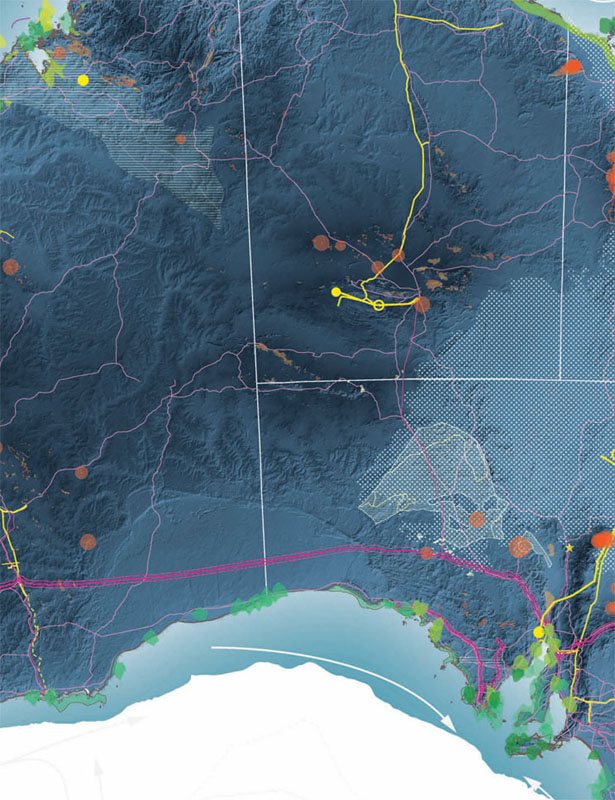
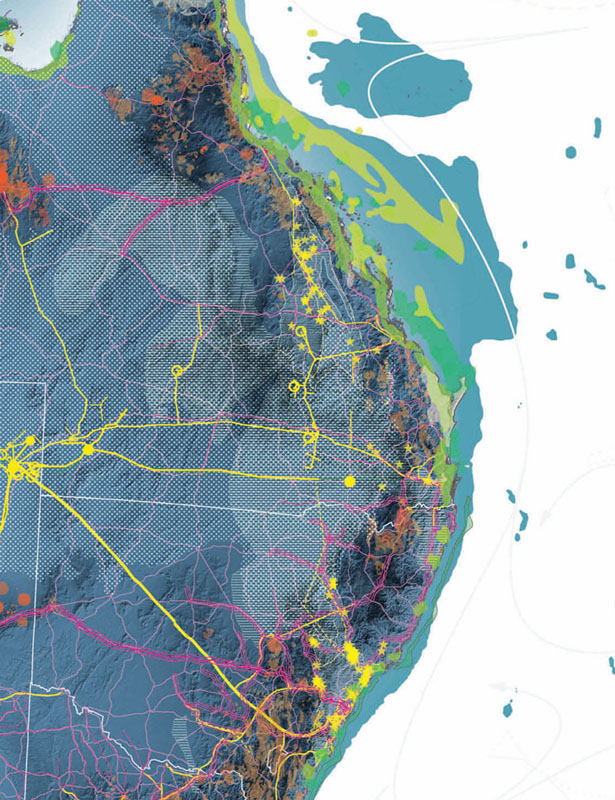
>
Landscape of Infrastructural Systems
Map of Australia’s infrastructural networks, coastal zones, regulatory regions, and concentration of settlements. Map: OPSYS